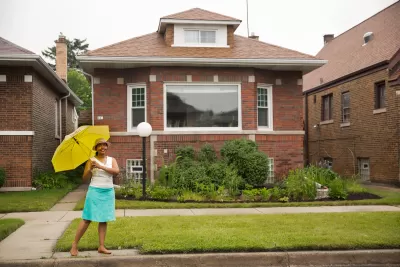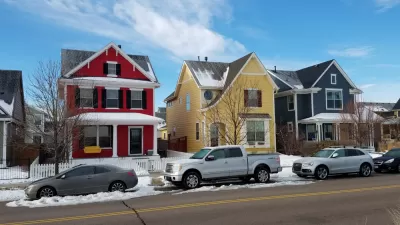According to a series of studies, white people have a blindness for seeing the black middle class in neighborhoods—even if they don't display other forms of racial animus.

"In a series of studies, [Courtney] Bonam [from the University of California, Santa Cruz] has found that white Americans hold ironclad stereotypes about black neighborhoods—even when they display little or no animus toward black people," writes Henry Grabar.
They’re likely to infer from the presence of a black family that a neighborhood is “impoverished, crime-ridden, and dirty,” though they make none of those assumptions about an identical white family in the same house," explains Grabar, while citing more examples in the article.
Bonam calls the phenomenon "invisible middle-class black space, but it it has real world consequences. "One of Bonam’s experiments from 2016, which she modeled after real-life situations, asks participants whether they approve of the siting of a potentially hazardous chemical plant. You can guess what happens: All else held equal, there’s more support for putting it in a black neighborhood."
FULL STORY: Black Space, White Blindness

Planetizen Federal Action Tracker
A weekly monitor of how Trump’s orders and actions are impacting planners and planning in America.

Chicago’s Ghost Rails
Just beneath the surface of the modern city lie the remnants of its expansive early 20th-century streetcar system.

San Antonio and Austin are Fusing Into one Massive Megaregion
The region spanning the two central Texas cities is growing fast, posing challenges for local infrastructure and water supplies.

Since Zion's Shuttles Went Electric “The Smog is Gone”
Visitors to Zion National Park can enjoy the canyon via the nation’s first fully electric park shuttle system.

Trump Distributing DOT Safety Funds at 1/10 Rate of Biden
Funds for Safe Streets and other transportation safety and equity programs are being held up by administrative reviews and conflicts with the Trump administration’s priorities.

German Cities Subsidize Taxis for Women Amid Wave of Violence
Free or low-cost taxi rides can help women navigate cities more safely, but critics say the programs don't address the root causes of violence against women.
Urban Design for Planners 1: Software Tools
This six-course series explores essential urban design concepts using open source software and equips planners with the tools they need to participate fully in the urban design process.
Planning for Universal Design
Learn the tools for implementing Universal Design in planning regulations.
planning NEXT
Appalachian Highlands Housing Partners
Mpact (founded as Rail~Volution)
City of Camden Redevelopment Agency
City of Astoria
City of Portland
City of Laramie





























